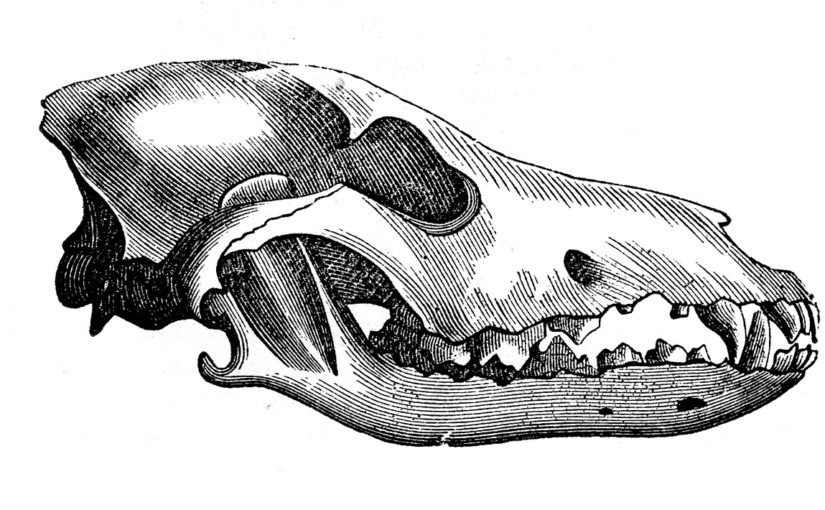Hey, everyone! So in case you haven’t heard, I am writing a book about Vulture Culture, the “fandom” that’s sprung up around the appreciation of hides, bones and other dead things in recent years. The working title is Vulture Culture 101: A Book For People Who Like Dead Things, and I will be self-publishing it via CreateSpace; the projected date of publication is Summer 2018. Currently, the first draft of the book is done, and I am working on edits and revisions. There’s also an IndieGoGo campaign through March 23 at http://igg.me/at/vultureculture101 which has already met its initial goal and is working toward stretch goals.
While I have spent over twenty years making hide and bone art, I do not have extensive experience with tanning hides or cleaning bones or otherwise prepared raw specimens. However, no book on Vulture Culture would be complete without tutorials on some basic processes, which is why I’m seeking writers to contribute essays!
Each essayist will be compensated with $100 and 10 paperback copies of Vulture Culture 101 once it has been published. Thank you again to my IndieGoGo contributors for helping to make this happen!
I am seeking one essay each on the following topics:
- Skinning a freshly dead or frozen and thawed animal and preparing the hide for tanning
- Tanning a hair-on hide, starting with a raw hide (rabbit would be best as it’s a nice small hide that’s easy and inexpensive to acquire); while you may choose one method of tanning, such as alum, please briefly mention other tanning methods like egg tanning
- Brain-tanning leather, starting with a hair-on hide (deer is most popular but I’m open to other easy to acquire suggestions like goat)
- Cleaning bones through maceration, starting with a whole skinned carcass, though with a brief mention of dermestid beetles and nature cleaning as alternatives, and proceeding through degreasing and whitening
- Wet specimens in jars, to include long-term care, how to change out old fluids, etc.
- Very basic mouse or rat taxidermy, including how to prepare the hide, positioning, etc.
- The basics of skeleton articulation; there’s not space to go through an entire skeletal articulation, but at least give people an idea of the tools and methods involved, and basic steps from skeleton acquisition to final display
- Invertebrate specimen preparation (not just as wet specimens)
Essays should have the following qualities:
- Between 1500 and 2000 words (you may be able to go over that a bit if you need the space)
- Written in easy to read English and suitable for a general audience
- Thoroughly explain the topic in a step-by-step manner; steps should be numbered
- Be accompanied by at least 4-6 print-quality photos showing different steps of the process (if you have to show different animals at different stages of the process, such as for longer processes like maceration, that’s fine, so long as all pertinent stages are covered clearly)
- Should not be previously published, either in print or online. If you’ve written similar essays that’s fine, just write a unique one for this project
I will have already covered topics like where to get hides and bones, and legalities concerning them, so you don’t need to go over them again. Stick to the how-tos of your topic. I will be doing some basic editing and proofreading, but you should be sending me final drafts by the due date.
Please apply by contacting me at lupa.greenwolf(at)gmail(dot)com; you will be asked to provide the following information:
- Your name, general location, email address and phone number
- A brief description of your experience in working with hides and/or bones and/or other dead things
- Which topic you would like to write about and what makes you qualified to write about it (you can apply for more than one topic; however, only one topic will be assigned to one writer unless there is a serious lack of suitable writers)
- At least three samples of your writing, published or not; Vulture Culture topics and how-to articles are extra-awesome, but send the best of whatever you have. Please also send a few sample photos showing your photography skills. You can send them as links and/or attachments.
- If you are under the age of 18, proof of permission by a parent or legal guardian
The deadline to apply is March 28, 2018. Selections will be made by April 7, 2018 at which point acceptance letters and contracts will be sent out. Completed final essays have a FIRM due date of June 7, 2018, so please make sure before you apply that you can dedicate the time to finishing your essay on time. You can also send me drafts in progress before that point if you’d like feedback.
Thank you!
 I’ve run into the idea before that in order to be a true Vulture you have to process your own specimens. That means picking up roadkill, salvaging the hide if it’s fresh enough, and finding a way to clean the rotting meat off the bones. While these are certainly part of Vulture Culture, they’re not required for you to be a part of this community. It’s made of taxidermists and bone cleaners, artists and collectors, and people who simply enjoy the aesthetic beauty of hides, bones and more.
I’ve run into the idea before that in order to be a true Vulture you have to process your own specimens. That means picking up roadkill, salvaging the hide if it’s fresh enough, and finding a way to clean the rotting meat off the bones. While these are certainly part of Vulture Culture, they’re not required for you to be a part of this community. It’s made of taxidermists and bone cleaners, artists and collectors, and people who simply enjoy the aesthetic beauty of hides, bones and more.